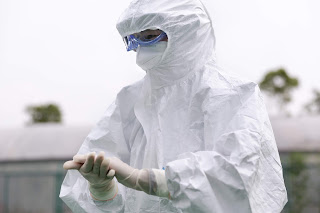Deep Dive into Prior Pandemics: Part 1, Books on Pandemics
Timeless Lessons About Human Behavior
When I first saw the pandemic spread West from Wuhan as I sat in my Qatar office, the New York Times published a list of seven books on pandemics. Being an academic who likes to use "teachable moments" to increase my own knowledge and understanding, I ordered all of them. They arrived in Doha just as officials ordered educators to start distance learning on March 10. Safe at home and free of many campus-related responsibilities, I now had more time to read, and so I did.
I started with the book on Ebola in 20th century US, then cholera in 19th century England, then the Black Plague in 14th century France, then malaria across the centuries and across the world, then the Spanish flu in 20th century US, and most recently smallpox in the US during the Revolutionary War period. I am now reading a book that asks how we plan to handle future pandemics. I still need to read the book on HIV/AIDS, a pandemic I remember well when I lived in Washington, D.C. in the early 1980s.
Other books exists on tuberculosis, dengue fever, SARS, MERS, yellow fever, encephalitis, meningitis, lassa fever, legionnaires' disease, STDs, toxic shock syndrome, and hantavirus. Perhaps I'll read them.
Two Approaches:
The books tend to fall into two categories. The books looking at older epidemics like the Black Plague, cholera, and smallpox describe historical records and the impact the pandemic had on the social, political, military, medical, religious, ecological, and economic systems at the time of the outbreaks. In contrast, the books about more recent or ongoing pandemics, like the Spanish flu, malaria, and Ebola often read like fast-paced action or mystery fiction. They dwell on the people trying to identify the source of the illness, curb the infections, identify the infectious agent, and create vaccines that save lives. They dive into the science of public health, virology, microbiology, and epidemiology.
The history books paint a clear picture of the devastation of these pandemics on society. After the Black Death in 1347 wiped out at least 30 percent of the population of France, people suffered from war, famine, burdensome taxation, fickle and incompetent leadership, a loss of faith in the Catholic church, pogroms against Jews who were blamed for the pestilence, marauding bands of mercenaries who stole anything of value, and a deterioration of the quality of life that lasted until the mid-1400s. More on the Black Plague in a later post.
Smallpox nearly cost the Continental Army the Revolutionary War, and it de-populated the South and West where people -- white, Native American, African American, and Hispanic -- had no natural immunity to the virulent disease that killed 50 to 90 percent of infected populations. The virus swept up from Mexico City to devastate Native American populations across the plains, the northwest, and Canada, carried by the horse-riding Shoshones who probably caught it during trade relations with Comanches. George Washington, desperate to protect his troops, created the first government sponsored inoculation program for his new recruits. More on smallpox in Part 2 of this series.
I have blogged about the Spanish flu pandemic here.
General Take-a-Ways:
Reading these books in the middle of a pandemic makes me grateful for the following:
- My ability to work from home safely and stay connected to family, friends, students, and colleagues because of technology.
- My ongoing salary payments that ensure I have food and shelter, can help others who are suffering, and support my newspaper subscriptions and book purchases.
- My ability to access high-quality information that allows me to protect myself and curate blog posts, here and here, that I hope help others stay informed.
- The availability of sophisticated science that quickly identified the coronavirus as new, identified its pathways of infection, began developing treatment options, and began developing a vaccine.
- The quick response of the Qatari government to the first signs of community transmission of the virus.
I have also learned that the following seems to come with all pandemics:
- Dramatic upheaval in the systems and institutions of society.
- Human responses that vary from careful to reckless.
- Incompetent and feckless leaders who do not serve the people in their local, state, and national communities, but instead protect and perpetuate their own narrow financial, health, and status interests.
- Competent leaders with foresight, courage, and judgment.
- Ignorant people who believe conspiracy theories.
- Courageous health care workers who tend the sick knowing they too might die from the mysterious infection.
- People who blame vulnerable groups for the illness and discriminate against them, at best, and kill them, at worst.
- Experts who have little expertise because the science does not exist to give them real insight into the microbe causing all the suffering.
- Experts who do their best to advance scientific understanding and learn (and record) the lessons of the pandemic.
- Efforts by religious authorities to use the illness to seek more piety from believers and to scorn non-believers or alternative sects. These efforts can backfire when religious leaders themselves fall ill and die. (Not so divine after all, eh?)
- Higher levels of conflict between nations as each perceives certain advantages from the landscape changed by the disease and widespread death.
Over the next few blog posts, I'll share the biggest take-aways from the books I have read. Stay tuned.
For a contemporary analysis of the reasons behind a careful or reckless response to a threat, like a pandemic, see here.
For a contemporary analysis of the reasons behind a careful or reckless response to a threat, like a pandemic, see here.





Comments
Post a Comment